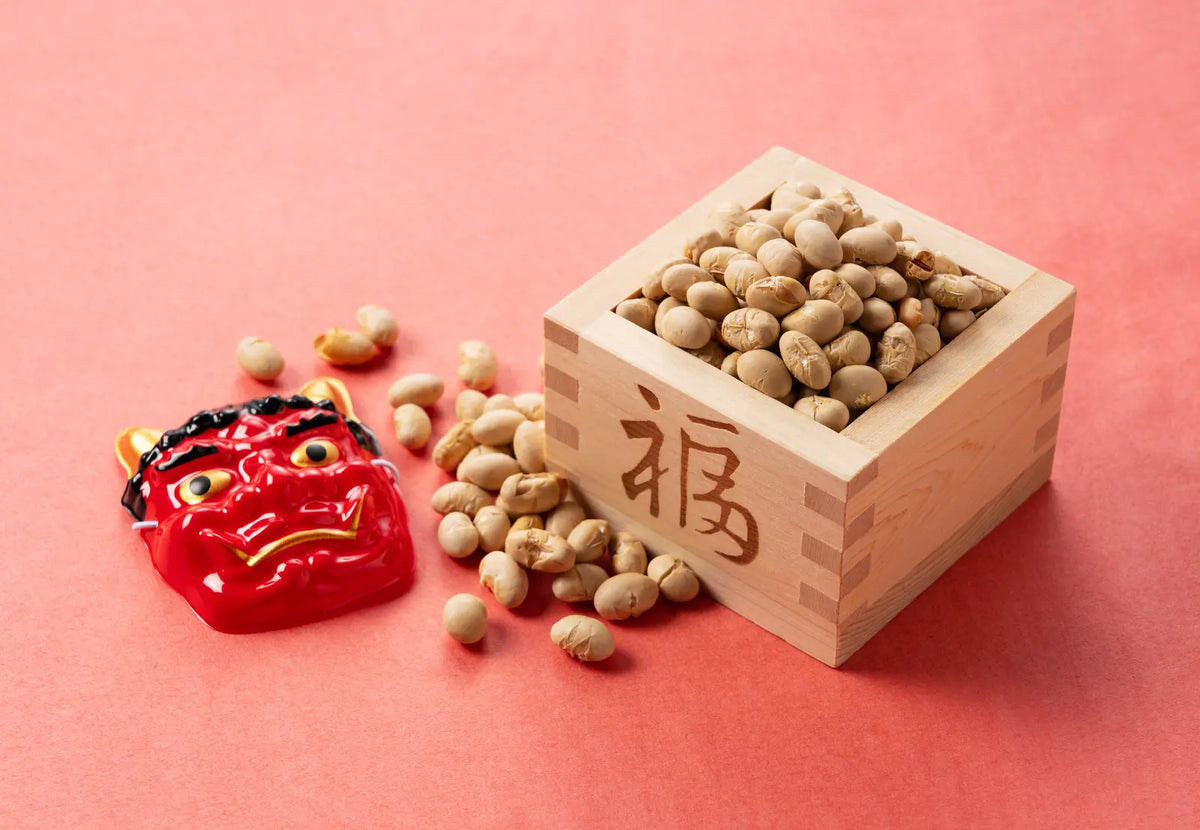

"Oni wa soto! Fuku wa uchi!"
Around February 3rd in Japan, a traditional event called Setsubun takes place. This day marks the eve of Risshun (the first day of spring) and is a significant moment signaling the seasonal transition from winter to spring. One of the key customs of Setsubun is mamemaki , or bean-throwing, to ward off evil and invite good fortune into homes.
The beans used in this tradition are roasted soybeans, known as fukumame . Many families prepare masks of "oni" (demons), and a family member—often a child—acts as the oni while others enthusiastically throw beans at them, chanting, "Oni wa soto! Fuku wa uchi!" ("Demons out! Fortune in!"). By driving away the oni, people not only expel bad spirits but also pray for a year of health and safety.
After the bean-throwing ritual, it is customary to eat the same number of fukumame as your age (or one more for good luck), symbolizing wishes for health and longevity. Setsubun, with its rich traditions, allows families to bond and celebrate Japanese culture while preparing for the brighter days of spring.

Valentine's Day in Japan: A Day of Chocolate and Love
Japan's Valentine's Day has its own unique twist. Unlike in many countries where both men and women exchange gifts, in Japan, the tradition emphasizes women giving chocolate to men. This practice began in the 1950s, thanks to a marketing campaign by confectionery companies, and has since become a beloved annual custom.
The chocolate itself varies depending on the relationship and intent:
- Giri-choco (obligatory chocolate): Given to colleagues, bosses, or acquaintances as a gesture of goodwill.
- Honmei-choco (true feeling chocolate): Reserved for someone special, such as a romantic partner.
- Tomo-choco (friendship chocolate): Exchanged among friends, often between women.
This day is not only a celebration of love but also a showcase of creativity, with homemade chocolates gaining popularity as a way to express heartfelt emotions.

Ehomaki: A Lucky Roll for Setsubun
Another staple of Setsubun is ehomaki , a thick sushi roll eaten to celebrate the arrival of spring. Ehomaki is enjoyed facing the year's lucky direction , determined by the zodiac, and consumed in silence to ensure wishes for health and happiness are fulfilled.
Packed with fresh ingredients, ehomaki offers a colorful feast for both the eyes and the taste buds. With fillings like tamagoyaki (sweet egg), cucumber, and seafood, it embodies the vibrant freshness of the new season.

Citrus Fruits: A Taste of Winter and Spring
While citrus fruits are often associated with winter, they remain a seasonal favorite as spring approaches. In particular, varieties like dekopon and setoka offer a delightful balance of sweetness and tanginess, making them popular during the early months of the year.
Rich in vitamin C, these fruits are not only delicious but also help support immune health during the changing seasons. Whether enjoyed fresh or as part of a dessert, they add a burst of flavor to the table and signal the transition to warmer days.
Embracing the Flavors of Spring
From the playful joy of Setsubun traditions to the indulgence of Valentine's Day chocolates, February in Japan is a month of seasonal delights. The customs and foods associated with this period—be it the healthful fukumame , vibrant ehomaki , or juicy citrus fruits—allow people to welcome the spring while cherishing the remnants of winter.
Take this opportunity to savor the changing seasons, incorporating these natural blessings into your meals. Whether celebrating with loved ones or exploring new flavors, February in Japan offers countless ways to experience the magic of transition.




